
Panglao Island: The Jewel of the Philippines
Discover Panglao Island, a stunning Philippines destination offering pristine beaches, vibrant marine life, and rich cultural heritage, perfect for every traveler.
Panglao Island, located in the central Visayas region of the Philippines, is a paradise for beach lovers and adventure seekers. Its white sandy beaches and crystal-clear waters make it one of the most beautiful islands in the country. Alona Beach is the most popular spot on the island, known for its vibrant nightlife and rows of restaurants and bars. It's the perfect place to unwind and enjoy the tropical atmosphere. Nature enthusiasts will find plenty to explore on Panglao Island. The island is home to the Hinagdanan Cave, a stunning natural wonder with stalactites and stalagmites, as well as an underground lake. A visit to the Panglao Marine Sanctuary offers a chance to see a diverse range of marine life up close. The island is also a gateway to the famous Balicasag Island, renowned for its excellent diving and snorkeling spots. For those interested in culture, the centuries-old Panglao Church is a must-see. Built in 1898, its architecture and historical significance provide a glimpse into the island's rich heritage. Another highlight is the Bohol Bee Farm, where you can learn about organic farming and enjoy farm-to-table meals. Panglao Island is not just a destination; it's an experience that combines natural beauty, adventure, and culture.
Local tips in Panglao Island
- Visit Alona Beach early in the morning to avoid crowds and enjoy the serene beauty.
- Bring snorkeling gear to fully appreciate the marine life at the Panglao Marine Sanctuary and Balicasag Island.
- Hire a local guide for a more informative tour of Hinagdanan Cave and other natural attractions.
- Sample the organic ice cream at Bohol Bee Farm; it's a local favorite.
- Check the tide schedule before planning a visit to the underground lake in Hinagdanan Cave to ensure the best experience.
Panglao Island: The Jewel of the Philippines
Panglao Island, located in the central Visayas region of the Philippines, is a paradise for beach lovers and adventure seekers. Its white sandy beaches and crystal-clear waters make it one of the most beautiful islands in the country. Alona Beach is the most popular spot on the island, known for its vibrant nightlife and rows of restaurants and bars. It's the perfect place to unwind and enjoy the tropical atmosphere. Nature enthusiasts will find plenty to explore on Panglao Island. The island is home to the Hinagdanan Cave, a stunning natural wonder with stalactites and stalagmites, as well as an underground lake. A visit to the Panglao Marine Sanctuary offers a chance to see a diverse range of marine life up close. The island is also a gateway to the famous Balicasag Island, renowned for its excellent diving and snorkeling spots. For those interested in culture, the centuries-old Panglao Church is a must-see. Built in 1898, its architecture and historical significance provide a glimpse into the island's rich heritage. Another highlight is the Bohol Bee Farm, where you can learn about organic farming and enjoy farm-to-table meals. Panglao Island is not just a destination; it's an experience that combines natural beauty, adventure, and culture.
When is the best time to go to Panglao Island?
Iconic landmarks you can’t miss
Bohol Bee Farm
Discover Bohol Bee Farm, where organic farming meets delicious dining amidst stunning natural beauty in the heart of Bohol.

Hinagdanan Cave
Experience the natural beauty and tranquility of Hinagdanan Cave in Bohol, a stunning limestone cave with crystal-clear waters perfect for swimming.

Oceanica resort formerly South Palms Resort Panglao
Discover luxury and tranquility at Oceanica Resort in Panglao, where stunning beaches meet exceptional hospitality for an unforgettable getaway.

Marilou Resort
Experience the ultimate relaxation at Marilou Resort in Panglao, Bohol, where stunning beaches and warm hospitality await.

Alona Beach
Discover the enchanting beauty of Alona Beach, Bohol – a tropical paradise perfect for relaxation, adventure, and unforgettable memories.

Modala Beach Resort
Discover the serene beauty and luxurious comfort of Modala Beach Resort in Panglao, a tropical paradise for every traveler seeking relaxation and adventure.
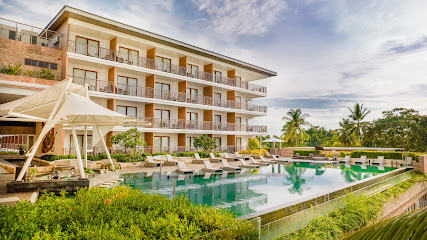
Best Western Plus The Ivywall Resort-Panglao
Experience ultimate relaxation at Best Western Plus The Ivywall Resort-Panglao, your luxurious getaway near Alona Beach in the heart of Bohol.
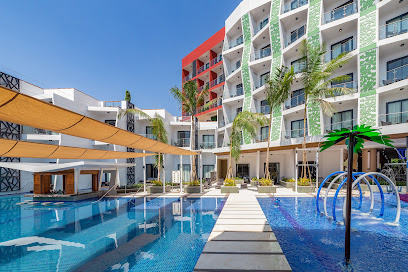
Panglao Regents Park Resort
Discover the perfect blend of relaxation and adventure at Panglao Regents Park Resort, your gateway to Bohol's stunning beaches and rich culture.

Alona Vida Beach Resort
Experience the ultimate tropical getaway at Alona Vida Beach Resort, where stunning beaches meet exceptional comfort and hospitality in Panglao, Bohol.

Linaw Beach Resort & Pearl Restaurant
Experience the serene beauty and culinary delights of Linaw Beach Resort & Pearl Restaurant in Panglao, Bohol, a tropical haven for every traveler.

Bamboo Place
Experience the vibrant flavors and tropical ambiance at Bamboo Place, a premier restaurant and cocktail bar on Panglao Island, Bohol.

Bougainvillea Spanish Restaurant and Wine Bar
Discover the flavors of Spain at Bougainvillea Spanish Restaurant and Wine Bar in Panglao, Bohol – a culinary gem for every food lover.

Napaling Reef
Experience the breathtaking underwater beauty of Napaling Reef, a must-visit destination in Panglao, Bohol, renowned for its vibrant marine life and stunning coral reefs.

Pyramid Beach Resort
Experience the ultimate tropical getaway at Pyramid Beach Resort, where luxury meets adventure on the stunning shores of Alona Beach in Bohol.

Lost Horizon Beach Dive Resort
Discover the beauty of nature and vibrant marine life at Lost Horizon Beach Dive Resort, your ultimate tropical escape in Panglao Island, Bohol.
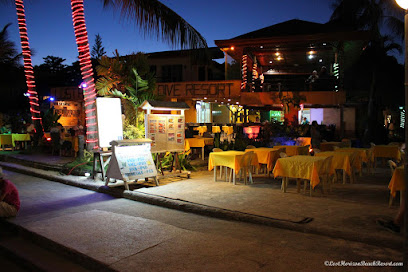
Unmissable attractions to see
Alona Beach
Discover the beauty of Alona Beach, where white sands meet crystal-clear waters and adventure awaits at every turn in Panglao, Bohol.
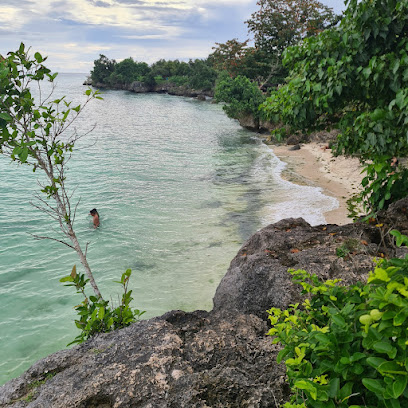
Napaling Reef
Explore Napaling Reef in Panglao, Bohol - a stunning underwater paradise filled with vibrant marine life and breathtaking coral formations.

Panglao Watchtower
Discover the historical charm and breathtaking views of Panglao Watchtower, a must-see landmark in the heart of Bohol's stunning landscapes.

Moadto Strip
Experience the vibrant energy of Moadto Strip in Panglao, a perfect blend of shopping, dining, and local culture in the heart of Bohol.

Domingo Cafe
Experience the rich flavors of Panglao at Domingo Cafe, a coffee lover's paradise offering delightful brews and cozy ambiance.

Liba-Ong White Beach
Experience the tranquil beauty of Liba-Ong White Beach in Panglao, Bohol, where stunning views, snorkeling adventures, and relaxation await you.

Dauis Bridge
Explore the stunning Dauis Bridge in Bohol, a scenic marvel offering breathtaking views, rich culture, and unforgettable experiences.

Hermit Beach
Experience the serene beauty of Hermit Beach in Panglao, Bohol – a tranquil paradise for relaxation and adventure.
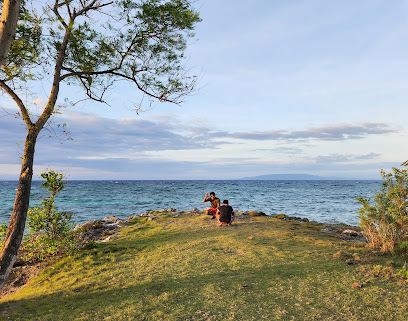
Best Sunset Hermit Beach
Experience the breathtaking sunsets and pristine sands at Best Sunset Hermit Beach, a tranquil paradise in Panglao, Bohol.

Dauis Watchtower
Discover the rich history and stunning views at Dauis Watchtower, a must-visit historical landmark in Bohol, Philippines.

Kalipayan Beach
Discover the serene beauty of Kalipayan Beach in Panglao, Bohol – where soft sands meet crystal-clear waters in a tranquil paradise.

Road to Guitarwoodhouse 吉他屋入口
Experience the delightful fusion of Asian cuisine and fine wines at Guitarwoodhouse in Panglao, Bohol – a culinary gem for every traveler.

Wrecked Plane Point
Explore Wrecked Plane Point in Panglao, Bohol - a stunning coastal attraction where history meets breathtaking natural beauty.
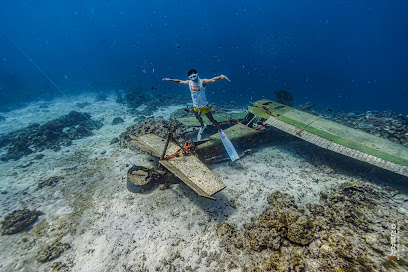
Bil-isan Public Beach
Experience the untouched beauty and tranquility of Bil-isan Public Beach in Panglao, Bohol, an ideal destination for relaxation and adventure.

Danao Sunset Viewpoint
Discover the serene beauty of Danao Sunset Viewpoint in Panglao, Bohol, where breathtaking sunsets paint the sky in vibrant colors.

Essential places to dine
SHAKA
Discover SHAka in Panglao - where delicious Filipino flavors meet vibrant tropical vibes in an unforgettable dining experience.

BARWOO
Discover BARWOO in Panglao - where Asian fusion meets local charm in every delicious bite.

Giuseppe Pizzeria & Sicilian Roast Bohol
Experience authentic Italian cuisine at Giuseppe Pizzeria & Sicilian Roast in Panglao, Bohol - where every meal is a slice of Italy.

Alona Vida Beach Resort
Experience tropical bliss at Alona Vida Beach Resort in Panglao, Bohol – where relaxation meets adventure amidst stunning natural beauty.

Bamboo Place
Discover Bamboo Place in Panglao: Where Flavor Meets Fun in a Tropical Paradise.

WOnDER LAND_sayaw thai food
Experience authentic Thai cuisine at WOnDER LAND_sayaw in Panglao - where every dish tells a story of flavor and tradition.

Bougainvillea Spanish Restaurant and Wine Bar
Experience authentic Spanish cuisine at Bougainvillea Spanish Restaurant and Wine Bar in Panglao—where vibrant flavors meet a welcoming ambiance.

La Familia
Experience authentic Filipino flavors at La Familia in Panglao – where every meal tells a story.

Thai Lang Restaurant
Experience authentic Thai flavors at Thai Lang Restaurant in Panglao - where every meal is a delicious journey through Thailand's culinary treasures.

Lekker Garden
Explore Lekker Garden: A culinary gem in Panglao offering vegan delights and hearty meals in a lush setting.

Gavroche
Experience authentic French cuisine at Gavroche in Panglao—where every meal is a celebration of flavor and tradition.

Kun's Stick and Bowl
Experience authentic Asian cuisine at Kun's Stick and Bowl in Panglao – where every dish tells a story.

Lamoy Restaurant
Experience authentic Asian flavors at Lamoy Restaurant in Panglao—where Chinese and Filipino cuisines come together beautifully.
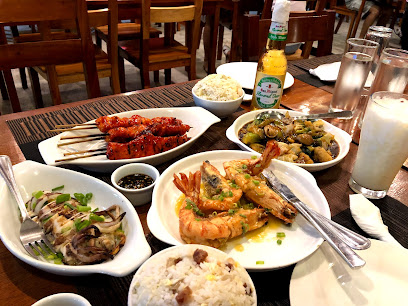
Sisa Bistro
Experience authentic Filipino flavors at Sisa Bistro in Panglao—where every dish tells a story and every visit feels like home.

Vanilla Sky Restaurant
Experience authentic Italian cuisine in Panglao at Vanilla Sky Restaurant – where every meal is a celebration of flavor and ambiance.
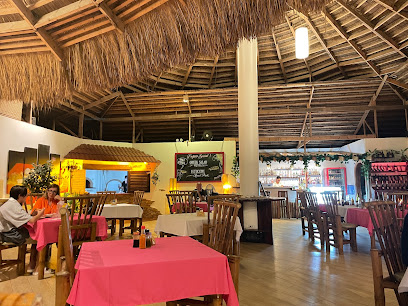
Markets, malls and hidden boutiques
Moadto Strip Mall
Explore Moadto Strip Mall in Panglao, Bohol - your ultimate shopping and dining destination filled with local culture and vibrant experiences.

Gavroche
Discover Gavroche in Panglao, where authentic French cuisine meets tropical charm, offering a unique dining experience with exquisite dishes and fine wines.

Panglao Public Market
Explore the vibrant Panglao Public Market, a cultural hotspot in Bohol offering fresh produce, local delicacies, and unique souvenirs.

Common Crew Coffee Roasters & Brewers
Experience the perfect blend of coffee, creativity, and collaboration at Common Crew Coffee Roasters & Brewers in Panglao, Bohol.

Aproniana Gift Shop
Explore Bohol's rich culture and artistry through unique crafts and local delicacies at Aproniana Gift Shop in Baclayon.

The Glebe Coffee
Discover The Glebe Coffee in Panglao, a cozy coffee shop offering exceptional brews and a charming atmosphere for travelers seeking relaxation.

TAHU - handmade souvenirs
Explore TAHU in Panglao for exquisite handmade souvenirs that celebrate the rich culture of Bohol, perfect for any traveler.

Wilcon Depot (Dauis, Bohol)
Discover a world of home improvement at Wilcon Depot in Dauis, Bohol, offering everything from tools to stunning home décor.

CRAZE Café & Ice Cream
Discover the sweet escape at CRAZE Café & Ice Cream in Panglao, offering delightful ice creams, refreshing cocktails, and a cozy atmosphere for all.

Yool's Souvenir shop
Discover the charm of Bohol at Yool's Souvenir Shop, where unique handcrafted treasures await every traveler.

Sean-Sean Store
Explore Sean-Sean Store in Panglao for a unique shopping experience, offering local products and friendly service in a vibrant atmosphere.

The Buzzz Dive Shop and Water Sports
Explore the vibrant underwater world of Bohol at The Buzzz Dive Shop and Water Sports, your gateway to exciting aquatic adventures.

Fixrite Hardware & Supermarket Panglao
Explore Fixrite Hardware & Supermarket in Panglao for all your hardware and household needs while enjoying the beauty of Bohol.

Monkey Hopping Gift Stop
Explore the vibrant Monkey Hopping Gift Stop in Panglao, Bohol for unique souvenirs and local crafts that capture the essence of your travels.

alona hidden dream store
Explore local flavors and unique finds at Alona Hidden Dream Store, your go-to grocery destination in Panglao, Bohol.

Essential bars & hidden hideouts
Bamboo Place
Experience the vibrant culinary and nightlife scene at Bamboo Place on Panglao Island, where flavorful dishes and refreshing cocktails await.

Paddy’s Irish Beer Pub and Restaurant
Discover the vibrant atmosphere of Paddy’s Irish Beer Pub and Restaurant in Panglao, Bohol, where delicious Irish cuisine meets local charm.

Jasz Bar & Restaurant
Discover the flavors of Bohol at Jasz Bar & Restaurant, a beachside gem offering fresh seafood and a variety of international dishes.

Aluna Beach Lounge
Experience the vibrant atmosphere of Aluna Beach Lounge, where great drinks meet stunning beachfront views in Panglao, Bohol.

Destino
Experience the vibrant nightlife at Destino in Panglao, Bohol – your go-to bar for unforgettable evenings filled with music and great company.

The Monkey Bar by Chef Jenzel Fontilla
Discover culinary delight at The Monkey Bar in Panglao, where tropical flavors and breathtaking views create an unforgettable dining experience.

Rumor Draft Bar and Restaurant
Experience the best of grilled delights and refreshing drinks at Rumor Draft Bar in beautiful Panglao, Bohol.

Udo's Bar
Experience the vibrant atmosphere of Udo's Bar, a tropical haven on Alona Beach, perfect for cocktails, relaxation, and nightlife.

Coast Pool Bar
Discover tranquility at Coast Pool Bar in Panglao, Bohol – a serene escape with refreshing drinks and stunning views.
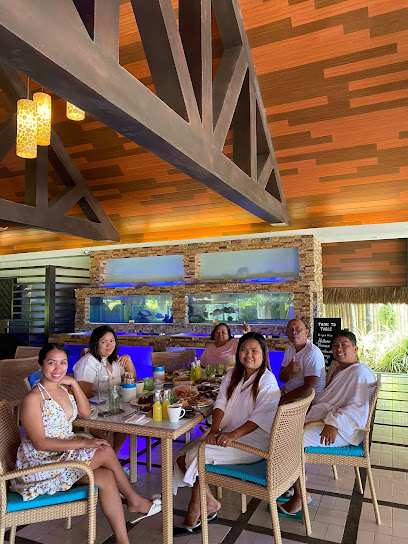
Jeff's Bar..k
Discover Jeff's Bar..k in Panglao: a vibrant fusion of Asian cuisine and cocktails in a tropical paradise.

Sea Breaze Pool Bar
Experience the perfect blend of relaxation and vibrant social life at Sea Breeze Pool Bar on Alona Beach, Bohol.

Rocky's Bistro and Lounge
Experience the culinary delights at Rocky's Bistro and Lounge, a vibrant bar and grill in Panglao, Bohol, perfect for food lovers and nightlife seekers.
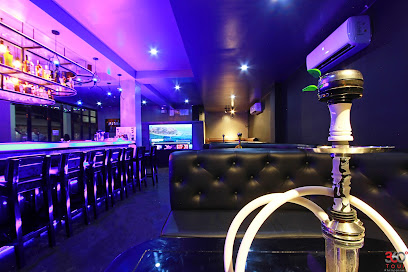
Bugsay Bar
Explore Bugsay Bar in Panglao, Bohol—a vibrant beachfront bar offering refreshing cocktails and stunning sunset views for a perfect getaway.

Ally's Bar and Grill
Experience the vibrant nightlife at Ally's Bar and Grill in Panglao, Bohol – a karaoke haven for food lovers and party seekers alike.

Ubar
Experience the vibrant nightlife at Ubar in Panglao, where refreshing drinks meet stunning beach views for an unforgettable evening.

Local Phrases about Panglao Island
-
- HelloKumusta
[koo-MUS-tah] - GoodbyePaalam
[pah-AH-lam] - YesOo
[oh-oh] - NoDili
[DEE-lee] - Please/You're welcomePalihug
[pah-LEE-hoog] - Thank youSalamat
[sa-la-MAT] - Excuse me/SorryPasayloa ko
[pah-sigh-LOH-ah ko] - How are you?Kumusta ka?
[koo-MUS-tah ka?] - Fine. And you?Maayo. Ikaw?
[mah-YAH-oh. ee-KAHW?] - Do you speak English?Kahibaw ka og Iningles?
[kah-hee-BAW ka og een-GLES?] - I don't understandDili ko kasabot
[DEE-lee ko kah-sah-BOT]
- HelloKumusta
-
- I'd like to see the menu, pleaseGusto ko makita ang menu, palihug
[GOO-stoh ko mah-KEE-tah ahng MEH-noo, pah-LEE-hoog] - I don't eat meatDili ko kaon ug karne
[DEE-lee ko kah-OHN oog KAR-neh] - Cheers!Mabuhay!
[mah-boo-HAI] - I would like to pay, pleaseGusto ko mobayad, palihug
[GOO-stoh ko moh-bah-YAD, pah-LEE-hoog]
- I'd like to see the menu, pleaseGusto ko makita ang menu, palihug
-
- Help!Tabang!
[tah-BAHNG] - Go away!Lakaw!
[lah-KAHW] - Call the Police!Tawaga ang pulis!
[tah-WAH-gah ahng poo-LEES] - Call a doctor!Tawaga og doktor!
[tah-WAH-gah og DOK-tor] - I'm lostNawala ko
[nah-WAH-lah ko] - I'm illSakit ko
[sah-KEET ko]
- Help!Tabang!
-
- I'd like to buy...Gusto ko mopalit...
[GOO-stoh ko poh-PAH-leet] - I'm just lookingNagtan-aw ra ko
[nag-tan-AW rah ko] - How much is it?Pila ni?
[PEE-lah nee?] - That's too expensiveMahal kaayo ni
[mah-HAHL kah-AH-yoh nee] - Can you lower the price?Pwede ka mo-ubos sa presyo?
[pweh-deh kah moh-OO-bos sa preh-SYOH?]
- I'd like to buy...Gusto ko mopalit...
-
- What time is it?Unsa oras na?
[OON-sah oh-RAHS nah?] - It's one o'clockUsa ka oras na
[OO-sah kah oh-RAHS nah] - Half past (10)Saysay na (napulo)
[sigh-sigh nah (nah-POO-loh)] - MorningBuntag
[BOON-tahg] - AfternoonHapon
[HAH-pon] - EveningGabii
[gah-BEE] - YesterdayKagahapon
[kah-gah-HAH-pon] - TodayKaron
[kah-ROHN] - TomorrowUgma
[OOG-mah] - 1Usa
[OO-sah] - 2Duha
[DOO-hah] - 3Tulo
[TOO-loh] - 4Upat
[OO-paht] - 5Lima
[LEE-mah] - 6Unom
[OO-nom] - 7Pito
[PEE-toh] - 8Walo
[WAH-loh] - 9Siyam
[SEE-yahm] - 10Napulo
[nah-POO-loh]
- What time is it?Unsa oras na?
-
- Where's a/the...?Asa ang...?
[ah-SAH ahng...?] - What's the address?Unsay address?
[OON-sigh address?] - Can you show me (on the map)?Pwede ka magpakita (sa mapa)?
[pweh-deh kah mag-pah-KEE-tah (sah MAH-pah)?] - When's the next (bus)?Unsa oras ang sunod (bus)?
[OON-sah oh-RAHS ahng soo-NOD (bus)?] - A ticket (to ....)Bilhete (paingon sa ....)
[bil-HEH-teh (pine-GOHN sa ....)]
- Where's a/the...?Asa ang...?
History of Panglao Island
-
Before the arrival of Spanish colonizers, Panglao Island was inhabited by the indigenous Eskaya people. They had a unique writing system and language, which are now recognized as part of the cultural heritage of the island. The Eskaya were known for their agricultural practices and their intricate weaving techniques.
-
In the late 16th century, Spanish explorers arrived in the Philippines, including Panglao Island. The Spanish established the town of Dauis and built several stone churches, such as the Church of Our Lady of the Assumption. These structures are notable for their baroque architecture and have become significant historical landmarks on the island.
-
During the Philippine Revolution against Spanish rule, Panglao Island became a site of conflict. The Battle of Panglao in 1898 was a significant event where local revolutionaries fought against Spanish forces. This battle was part of the larger struggle for independence and contributed to the eventual liberation of the Philippines from Spanish rule.
-
Following the Spanish-American War, the Philippines, including Panglao Island, came under American control. During World War II, the island was occupied by Japanese forces. The local population endured significant hardships during this period, but resistance movements were active, contributing to the eventual liberation of the Philippines in 1945.
-
In the latter half of the 20th century, Panglao Island began to develop as a major tourist destination. The construction of the Panglao International Airport in 2018 has further boosted tourism. The island is now renowned for its stunning beaches, dive sites, and the vibrant Alona Beach area, which attracts visitors from around the world.
-
Efforts have been made to preserve the rich cultural heritage of Panglao Island. The Eskaya language and traditions are being revitalized, and historical landmarks like the Dauis Church are being restored. Cultural festivals and local crafts are promoted to maintain the island's unique identity amidst growing tourism.
Panglao Island Essentials
-
Panglao Island is accessible via Bohol-Panglao International Airport, which is located on the island itself. The airport serves domestic flights from Manila, Cebu, and other major cities in the Philippines. International flights are also available from select Asian cities. Alternatively, you can fly into Tagbilaran City on Bohol Island and take a 30-minute car or van ride to Panglao. Ferries from Cebu and Dumaguete also connect to Tagbilaran City, providing another route to Panglao.
-
Upon arrival, various modes of transport are available on Panglao Island. Tricycles and motorcycles are popular for short distances, while car rentals offer more flexibility for exploring the island. Taxis and shuttle services are also available for airport transfers and longer trips. For a more local experience, jeepneys operate on main routes, although schedules can be irregular.
-
The official currency is the Philippine Peso (PHP). While credit cards are accepted in many hotels, restaurants, and shops, it's advisable to carry cash for smaller establishments and local markets. ATMs are available in popular tourist areas, but it's wise to withdraw sufficient cash beforehand, especially if you plan to visit remote parts of the island.
-
Panglao Island is generally safe for tourists, but standard precautions should be taken. Avoid isolated areas at night and always be aware of your surroundings. Incidents of petty theft can occur, so keep your valuables secure. Popular tourist areas like Alona Beach are usually safe, but exercise caution in less populated neighborhoods.
-
In case of emergencies, dial 911 for immediate assistance. The island has medical clinics and a hospital in Tagbilaran City, which is a short drive away. Pharmacies are available for minor health issues. It's recommended to have travel insurance that covers medical emergencies. For police assistance, visit the local police station in Panglao town.
-
Fashion: Do wear light, comfortable clothing suitable for tropical weather, but also carry modest attire for visiting religious sites. Avoid very revealing clothing in public areas. Religion: Do respect local customs and traditions. Remove your shoes when entering churches and other religious sites. Public Transport: Do be patient and polite. Jeepneys and tricycles can get crowded. Don’t eat or drink while on public transport. Greetings: Do greet people with a smile or a polite nod. Handshakes are common, but a slight bow is also appreciated. Eating & Drinking: Do try local dishes and accept food offerings graciously. Don’t waste food; it's considered disrespectful.
-
To experience Panglao Island like a local, visit the local markets to buy fresh produce and seafood. Engage with locals who are often friendly and eager to share their culture. Don't miss diving or snorkeling at Balicasag Island and Pamilacan Island, which offer some of the best marine life experiences. Attend local festivals like the Sandugo Festival in nearby Tagbilaran City to immerse yourself in local culture.
Trending Landmarks in Panglao Island
-
Bohol Bee Farm
-
Hinagdanan Cave
-
Oceanica resort formerly South Palms Resort Panglao
-
Marilou Resort
-
Alona Beach
-
Modala Beach Resort
-
Best Western Plus The Ivywall Resort-Panglao
-
Panglao Regents Park Resort
-
Alona Vida Beach Resort
-
Linaw Beach Resort & Pearl Restaurant
-
Bamboo Place
-
Bougainvillea Spanish Restaurant and Wine Bar
-
Napaling Reef
-
Pyramid Beach Resort
-
Lost Horizon Beach Dive Resort
Nearby Cities to Panglao Island
-
Things To Do in Cebu City
-
Things To Do in Camiguin
-
Things To Do in Cagayan de Oro
-
Things To Do in Siargao
-
Things To Do in Boracay
-
Things To Do in Davao City
-
Things To Do in Zamboanga City
-
Things To Do in Legazpi
-
Things To Do in Puerto Princesa
-
Things To Do in Tagaytay
-
Things To Do in Palawan
-
Things To Do in Manila
-
Things To Do in Subic
-
Things To Do in Angeles City
-
Things To Do in Sandakan









